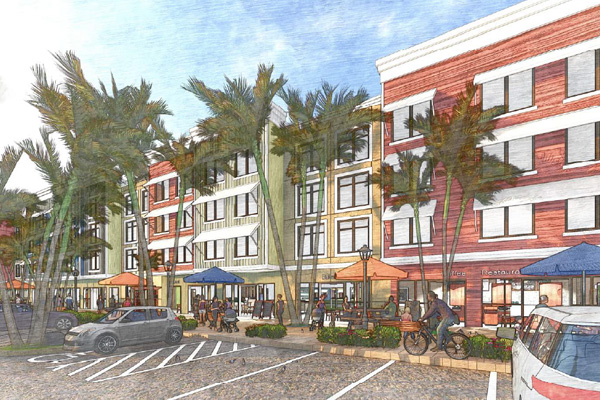Leveling Up Maui’s Housing Options
Multi-level, multi-use, and affordable, a new development in Kīhei provides one solution for helping Hawai‘i’s housing crisis.

Imagine not really knowing your grandparents, because your ‘ohana can’t all afford to live in the same state. “It’s a tragedy,” says Keoni Kuoha, director of the Hawai‘i Community Foundation’s House Maui Initiative. “This loss of generational traditions tears at the fabric of our communities.”
This scattering of family is a reality for many on Maui, where more than half of families are housing cost-burdened, meaning they pay more than 30 percent of their monthly income toward housing, and where nearly additional 14,000 housing units are needed by 2025.
The House Maui Initiative brings together a diverse group from across sectors—public and private—to create a sustainable housing system that generates and keeps homes affordable for our kamaʻāina, enhances natural and cultural resources, and enriches our quality of life.
Most of the recent affordable housing developments on Maui have been either single-family homes or townhouses. But Hawai‘i won’t be able to address the housing shortage with single-family homes alone, says Kuoha, and higher-density solutions are needed. “Here on Maui and across our Islands, we value our natural spaces and our agricultural lands,” he says.
“When we bring those values to the issue of housing, it means that instead of adding to urban sprawl, we need to build up a little bit.”
A new, affordable housing development in Kihei, Hale o Pi‘ikea, may offer a preview of what a sustainable housing future could look like for Maui communities.
Phase I of Hale o Pi‘ikea consists of two buildings, four stories each, with a total of 90 one-, two-, and three-bedroom units slated as rentals for low-income households (making less than 60 percent of the area median income). Phase 1 is expected to be completed by 2024.
It’s infill development, meaning it’s on a vacant parcel of land in an area that has already been largely built up. By using these under-utilized spaces, housing can be created without adding to sprawl.
Phase 2 will build out 97 affordable rental units for kūpuna (ages 55 and up), and Phase 3 will be 36 affordable rental or for-sale townhomes. Resident managers will live and work on-site.
“It’s been a collective approach. The property originally was slated to be developed into a downtown retail area, but the community was saying, hey, that’s great, but we need affordable housing,” says Christopher Flaherty, chairman and CEO of 3 Leaf Holdings Inc. and co-managing general partner of ‘Ikenakea Development. (‘Ikenakea Development is a partnership between the Hawaiian Community Development Board and 3 Leaf Holdings and works to develop affordable housing across Hawai‘i.)
The revised plan still includes retail space, promoting a mixed-use development strategy that’s been well received by the community. “The developer of the Downtown Kihei master plan, Krausz Companies, was a great partner,” says Flaherty. “They approached us about workforce housing, affordable housing, and sold us the south part of a parcel on Pi‘ikea Avenue.”
Hale o Pi‘ikea’s central location in Kihei is designed to establish a walkable live/work area, with easy access to jobs at local hotels and resorts, as well as to restaurants, groceries, schools, beaches, a post office, and a bus route. “And being near a supermarket means better access to good, healthy food. For our lower-income community, that access has sometimes been an issue,” adds Kuoha.
With so many rentals needed and the market pushing folks out of Maui, Kuoha says, “Let’s get to the core of the issue, and create affordable, stable rental opportunities for Maui’s families.”
To learn more about the House Maui Initiative and how you can help, visit housemaui.com.
Read More Stories of Impact